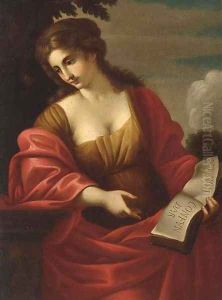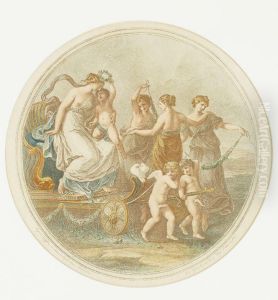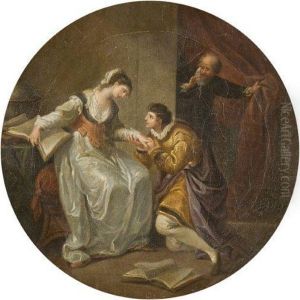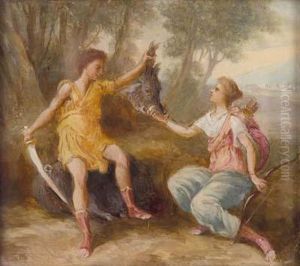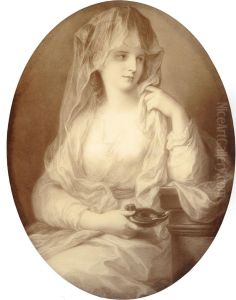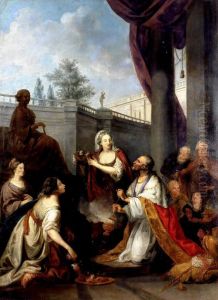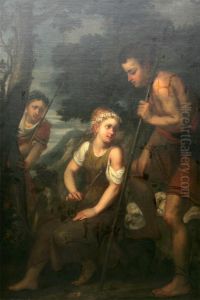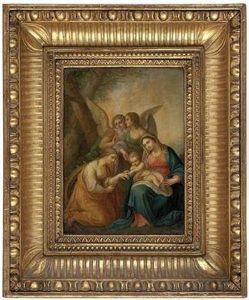Angelica Kaufmann Paintings
Angelica Kauffman, born Maria Anna Angelika Katharina Kauffmann on October 30, 1741, in Chur, Grisons, was a Swiss Neoclassical painter who had a successful career in London and Rome. Her father, Johann Joseph Kauffmann, was a relatively poor man but a skilled muralist and painter, which meant that Angelica was immersed in the arts from a young age. Recognizing his daughter's talent, he provided her with a solid foundation in art and encouraged her development.
In her early years, Kauffman traveled extensively through Switzerland and Italy, where she undertook study and work which would inform her artistic style. She was well-educated not only in the arts but also in languages and was fluent in several, including Italian, French, English, and German. Her early paintings were influenced by Italian painters such as Pompeo Batoni and Carlo Maratta, and she quickly gained a reputation for her virtuosity and skill in portraiture and historical painting.
Kauffman moved to London in 1766, where she became a founding member of the Royal Academy of Arts in 1768 – an extraordinary achievement for a woman in the 18th century. She was one of only two female founding members, along with Mary Moser. During her time in England, Kauffman was patronized by members of the nobility and was well connected in literary and artistic circles. She developed a friendship with Sir Joshua Reynolds, an influential artist of the time, and her work was much in demand.
Despite her success, Kauffman faced challenges and controversies, including a disastrous marriage to an imposter who claimed to be a Swedish count. After an annulment, she married the Venetian painter Antonio Zucchi in 1781 and moved to Rome, where she spent the remainder of her career. Her house became a hub for artists, writers, and intellectuals. Kauffman continued to receive commissions from across Europe and was celebrated for her historical and allegorical works, as well as her portraits.
Kauffman's style blended elements of Classicism with the grace and lightness of Rococo, and her work often featured strong and intelligent women from history and mythology. She was also skilled in decorative art, creating designs for furniture, jewelry, and other objects. Her influence extended beyond her own artworks, as she contributed to the dissemination of Neoclassical aesthetics.
Angelica Kauffman died on November 5, 1807, in Rome. Today, her legacy is recognized in the history of art as one of the most prominent and successful female artists of her time. Her works can be found in major museums and collections around the world, and her career is celebrated for its breadth and the barriers it broke for women in the arts.
